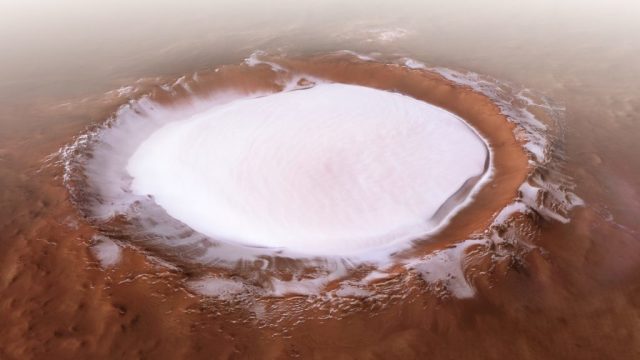Engineer Paul L. Smith from the University of Bristol proposed to create an extraterrestrial nature reserve on Mars (English extraterrestrial nature reserve, ETNR), which can serve as a psychological refuge and a botanical garden. A number of problems that specialists will have to face are described in an article published in the International Journal of Astrobiology . This is reported in a press release on Phys.org .
According to the researcher, if uncontrolled population growth continues on Earth, which, according to forecasts, will reach nine billion by 2050, then natural areas that are important for the conservation of global biodiversity may completely disappear within a century. An alternative is to create a large number of habitats on Mars in the form of closed ecosystems isolated from uninhabitable conditions. Mars can provide these dwellings with water, gases to create breathable air and sunlight. According to Paul, forests are the most suitable ecosystems for cultivation.
It is assumed that the Martian forests should be under a hemispherical protective shell with a radius of 0.25 kilometers and an area of 20 hectares, which is much larger than the artificially created ecosystem in the Biosphere 2 project (0.2 hectares). However, there are a number of important problems for the implementation of the idea, including ionizing radiation, limited availability of sunlight and UV radiation, lack of a magnetic field, difference in seasons, lack of a lunar cycle and suitable soils.
The problem of ionizing radiation can be solved by a combination of glass and plastic that filters harmful wavelengths, while passing ultraviolet and visible light. Magnetic fields are an important condition for the existence of magnetoreception in some species of living beings, which may require their imitation inside the domes. The seasonal variability of Mars is very different from that of Earth, so the seasons should also be designed, since they play an important role in the stages of development of animals and plants and their behavior.
Lunar cycles play an important role in the regulation of circadian rhythms in living organisms, but the moons of Mars — Phobos and Deimos — practically do not affect the planet and are not able to cause tides. Mars receives only 43 percent of the sunlight that Earth receives. This is enough for photosynthesis, but the growth rate of plants on the Red Planet will not match the Earth's without artificial increase.
Mars has a basalt crust, which contains many nutrients necessary for the growth of terrestrial plants. However, microbes and invertebrates like earthworms are also important factors of soil fertility, which makes the problem of creating a suitable soil for the forest an extraordinarily difficult task. Also, the Martian regolith contains a large amount of perchlorates, iron oxides and hydrogen peroxide, which is a very toxic mixture.
Reproduction of terrestrial forests is currently impossible, but it is possible to develop new ecosystems that function in unexpected ways. There is also an ethical problem associated with the forced relocation of animal species to risky habitats. However, artificial ecosystems can contribute to the survival of living organisms, which, according to Smith, is the highest biocentric priority.

